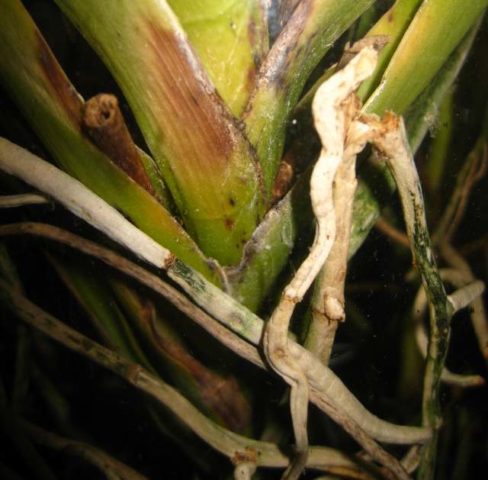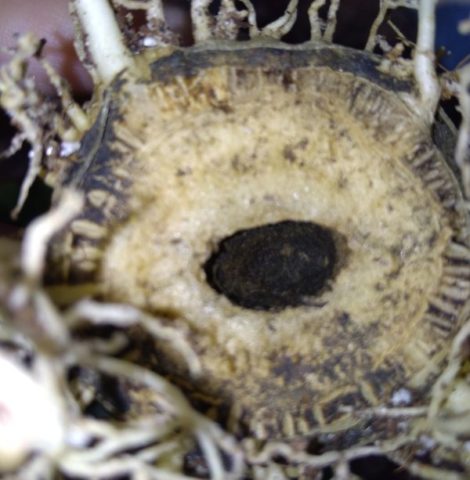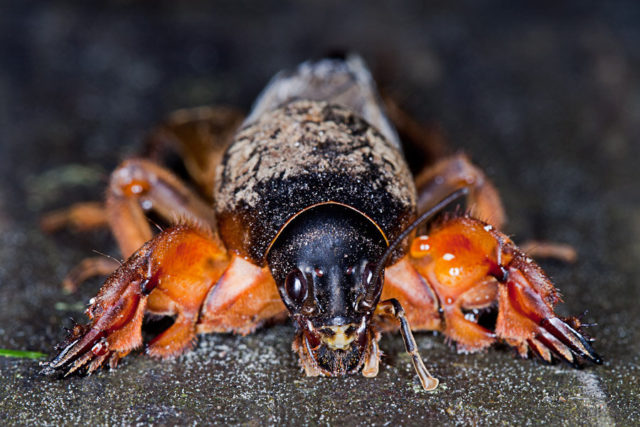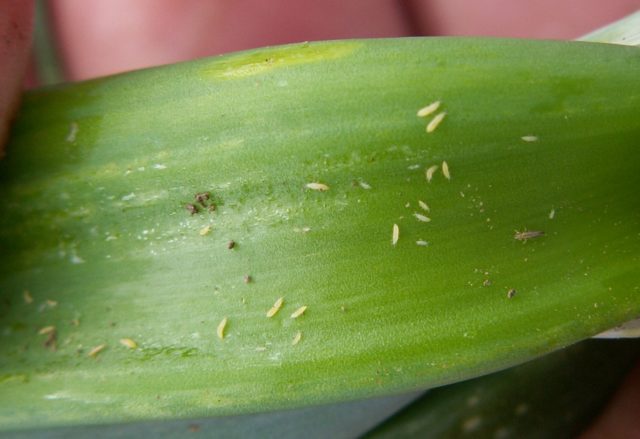Content
Crocosmia is an ornamental plant with beautiful bunches of flowers and a delicate aroma of saffron. Planting and caring for montbrecia in the open field will be within the power of even novice gardeners.
Description of colors
The word "crokosmia" (Crokosmia) in translation from Greek means "aroma of saffron." This name was given to the plant for the delicate smell of spice that the dried flowers exude. The culture received the name "montbrecia" in honor of the French botanist Antoine de Montbre. And for the external resemblance to the gladiolus, which is clearly visible in the photo of the montbrecia flower, it is called the Japanese gladiolus.
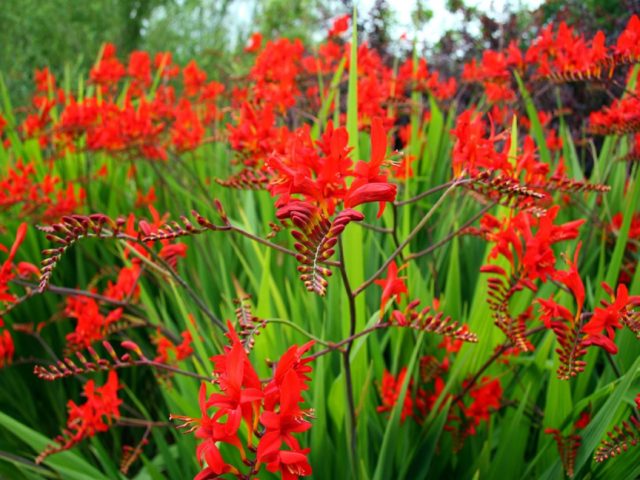
Montbrecia will be a good decoration for a personal plot
The birthplace of crocosmia is South Africa. In Russia, the flower appeared in the 19th century and has since been used in the landscape design of urban recreation areas and private household plots.
Montbrecia is a perennial plant of the iris family with a slender erect stem reaching 1 m in height and linear xiphoid leaves with a deep longitudinal groove in the middle. The color of the leaf plate is light green.
On high and strong peduncles of perennial crocosmia, as can be seen in the photo, there are dense paniculate or spike-shaped inflorescences, consisting of several funnel-shaped flowers of a yellow, red or orange hue. Montbrecia is characterized by alternate blooming of buds, which allows to increase the flowering period and maintain decorativeness until autumn.
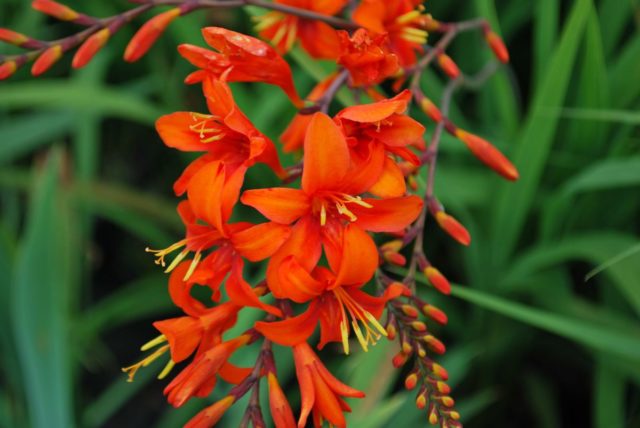
There are about a dozen buds on one peduncle
The root system of montbrecia is tuberous, consists of several corms covered with brown shells. After flowering, rather large brownish-red seeds ripen in a rounded seed box.
Crocosmia grown from seeds blooms in the 3rd year of life, from children - in the 2nd, and from bulbs - in the first summer. In central Russia, the flowering period of an adult plant begins in July and lasts about 2 months. In the southern regions, where the montbrecia is not dug up for the winter, the first flowers can be seen in June.
The closest relatives of crocosmia are: iris, freesia, crocus, gladiolus and ferraria.
Types and varieties of montbrecia
In the wild, there are about 60 species of montbrecia. However, not all are used in culture.
Crokosmia aurea
This is the first species from which all the experiments of breeders began. Golden montbrecia got its name for bright yellow or orange flowers about 5 cm in size. Leaf plates, like all representatives of iris, are narrow xiphoid. The flowering period lasts from July to September. Montbrecia loves light, but can grow in diffused shade. It does not winter in the middle lane.

The golden montbrecia owes its name to bright yellow flowers.
Crokosmia masoniorum
A short plant (about 80 cm) with yellow, bright orange or red flowers and ribbed xiphoid leaves. This montbrecia has a relatively good frost resistance and is suitable for cultivation in regions with cool winters. Blooms in July-September.

Massonorum will delight with its flowers for 2 months
Crokosmia paniculate
An early species that begins to bloom in June. Outwardly, as seen in the photo of crocosmia flowers, paniculata resembles the rest of the species: orange flowers, long green leaves.
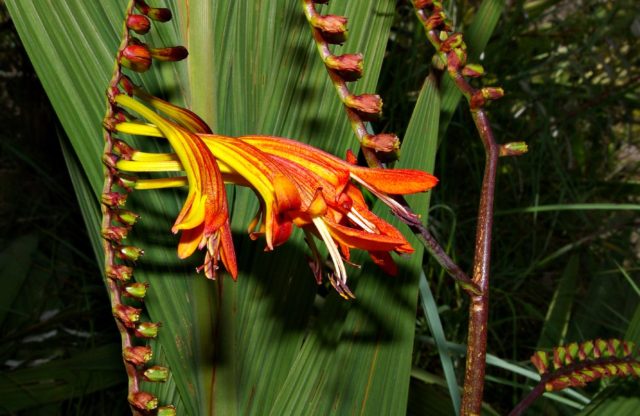
Crocosmia paniculata is characterized by drooping flowers
Crokosmia pottsii
This species is characterized by the narrowest leaves of all montbrecia and the smallest flowers of orange or yellow hue. Blooms in July-September. Loves light, but can develop in diffused shadows.
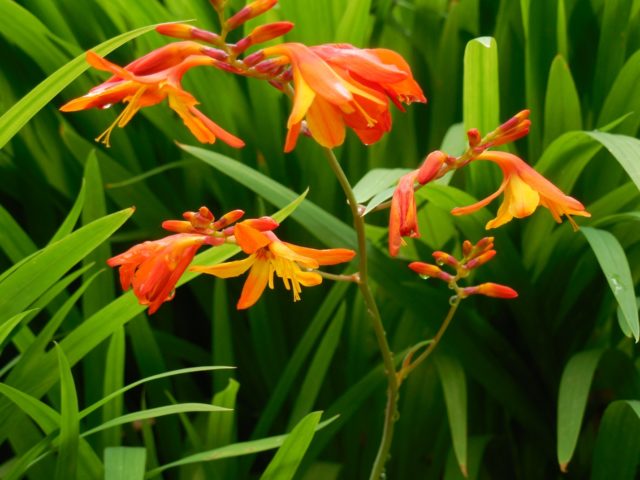
Thin graceful leaves of crocosmia potts are combined with beautiful orange flowers
Common crocosmia (Crokosmia crjkosmiflora) or garden montbrecia
The height of the common montbrecia bush is about 1 m. The leaves are thin, xiphoid, about 5 cm wide. On erect peduncles there are panicles of yellow, orange or red flowers. They bloom in late June or early September. Montbrecia vulgaris became the originator of several varieties.
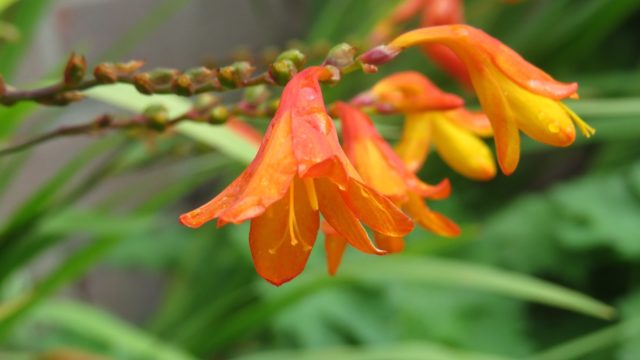
Crocosmia vulgaris can have flowers of different shades
Lucifer
This variety of montbrecia is rightfully recognized as one of the most beautiful. Tall (about 1.5 m) peduncles are crowned with bright blood-red inflorescences, which stand out favorably against the background of light green leaves. The variety survives cold weather well, which allows it to be grown in areas with cold winters. This crocosmia takes root perfectly in the Moscow region.
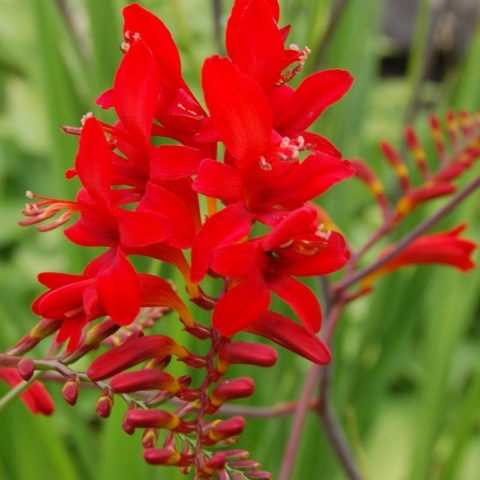
Lucifer will become a bright spot in the garden
Emily Mckenzie
Low-growing montbrecia, about 60 cm high. The flowers are spectacular, orange, with a darker spot in the center of the flower basket. Used in group compositions for decorating personal plots. Montbrecia blooms for 2 months, starting at the end of July.
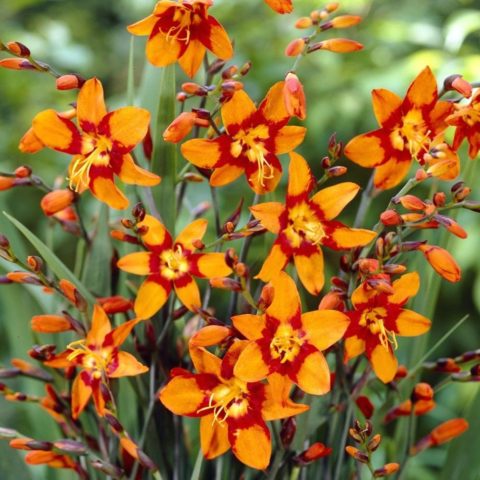
Emily Mackenzie stands out from other colors
Star of the East
A beautiful large-flowered variety about 1 m high. The flowers are bright orange, the size of the flower basket is 10 cm. The variety is late, the flowering period is in August-October. The Star of the East is not distinguished by good frost resistance, therefore, this montbrecia is dug up or covered for the winter.
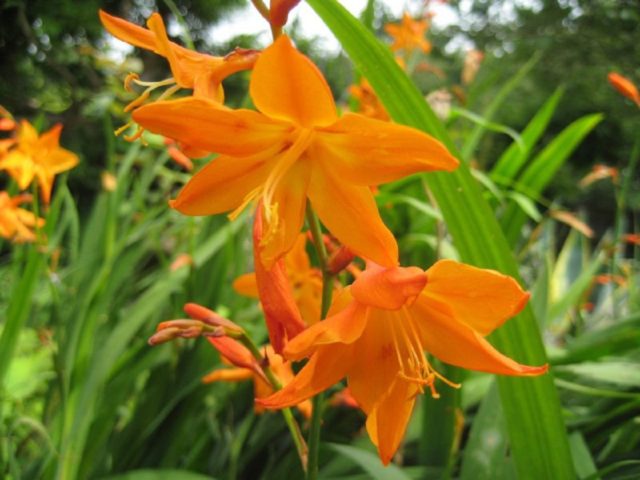
The Star of the East has the largest flowers among all representatives of the species.
Red King
A lush bush with long, xiphoid leaves and beautiful red flowers with a lighter center. Blooms for 2 months, starting in July.
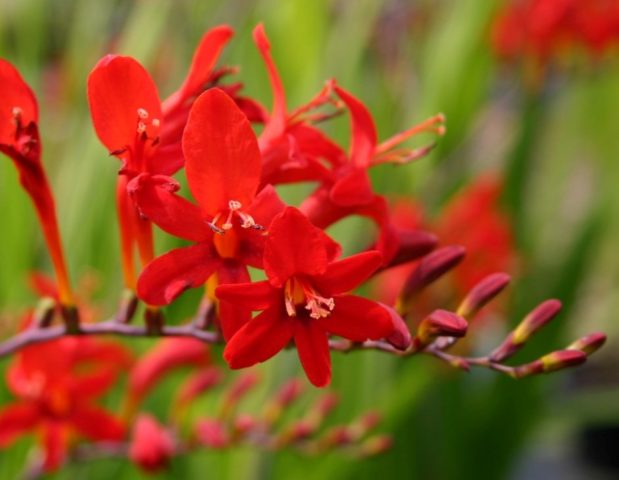
Lush Crocosmia Flowers The Red King lives up to its name
Montbrecia in landscape design
Montbrecia is used to decorate flower beds, alpine slides and rabatok. Crocosmia looks good in the garden, as can be seen in the photo. The plant stands out favorably both in individual plantings and in group compositions. The montbrecia solitaire is planted against the backdrop of a mowed lawn. Other iris species will become suitable neighbors in group plantings.
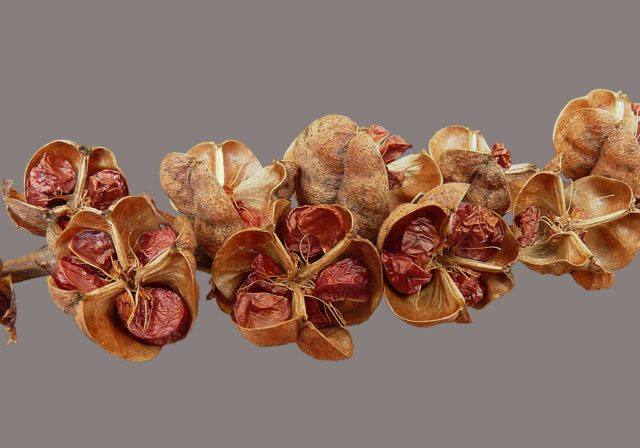
Seeds can be harvested after blooming montbrecia
Montbrecia flowers do not fade for a long time in the cut form and even retain their decorative effect when dry, therefore they are well suited for bouquets and ikebana.
Breeding features
There are 2 known methods of propagation of montbrecia: seeds and bulbs (the method of dividing the rhizome).
The first method is used when crocosmia does not yet grow on the site. Seeds are sown in a container for seedlings, followed by planting them in open ground.
Reproduction of montbrecia by dividing the rhizome is considered less laborious and more effective.

Seeds can be harvested after blooming montbrecia
Planting and caring for montbrecia seedlings
Crocosmia is an unpretentious culture. Planting and caring for a montbrecia flower is not particularly difficult.
When to plant montbrecia seeds
Seeds for seedlings are sown in late February or early March. Before planting in a container, it is advisable to germinate them.
Preparation of containers and soil
Ideally, use individual containers for planting seeds for seedlings. If this is not possible, the seeds are planted in one large container.
The soil for montbrecia seedlings can be bought ready-made or made on your own by combining garden soil, peat, sand and compost in equal parts.

You can use a container with cells
Landing algorithm
In the process of planting seed material of montbrecia:
- fill the container with potting soil;
- plant seeds, deepening them by 1 cm, evenly moisten the soil;
- cover the container with foil and leave in a well-lit place.
The film is removed after emergence.
Seedling care
The procedure for caring for montbrecia seedlings is identical to caring for other flowering crops and includes:
- watering, which is carried out as the soil dries;
- loosening - the soil is periodically carefully loosened.
After the appearance of the 3rd leaf, the plants grown in a common container are dived into individual containers.
Approximately 2 weeks before planting in open ground, the seedlings begin to harden, gradually increasing the time spent in the air.
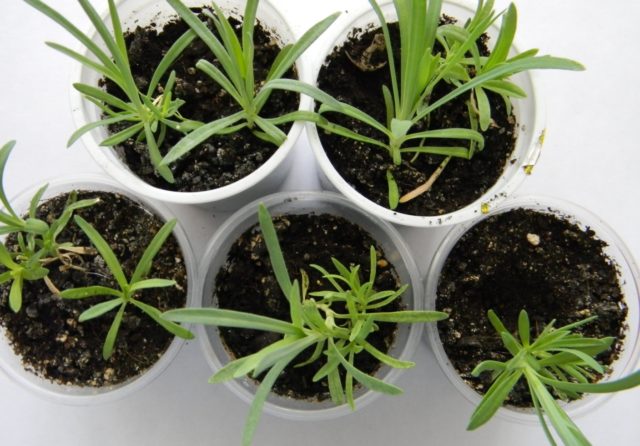
Hardened seedlings adapt faster outdoors
Planting and caring for crocosmia in the open field
Planting rules for montbrecia are almost the same as for all representatives of the iris family. In cultivation, crocosmia is unpretentious, but still requires regular maintenance.
Recommended timing
Montbrecia seedlings are planted in open soil when it warms up to 10 ° C, and the threat of spring frosts will be left behind. This is around the beginning of May.
At the same time, it is recommended to plant bulbous material.
Site selection and soil preparation
Crocosmia is a light-loving plant, so an open and well-lit area should be chosen for its cultivation. Lack of heat and sunlight may not have the best effect on the bloom of the montbrecia. A site with a close occurrence of groundwater is not suitable for this plant.
It is better to choose light permeable soil for crocosmia. Ideally, prepare it in the fall - dig up and apply organic fertilizers at the rate of 2 buckets per 1 sq. m. In early spring, before planting, the soil is loosened again and nitrogen-containing fertilizers are added.
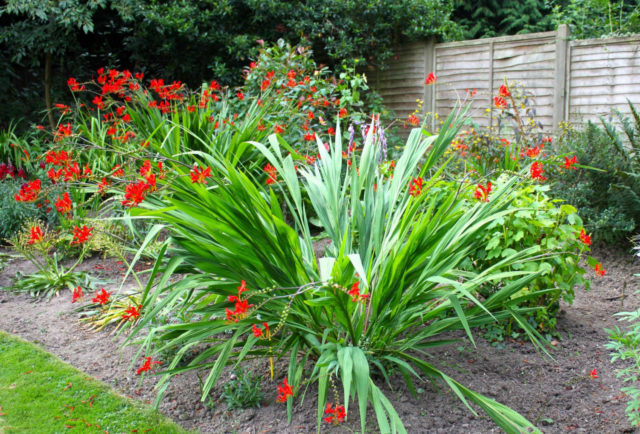
Crocosmia growing area must be protected from the wind
Landing rules
Algorithm for planting seedlings:
- make holes and water them;
- seedlings are placed in the center of the hole together with an earthen clod and covered with soil;
- the soil in the root zone is mulched with dry sawdust or chopped grass without seeds.
Crocosmia bulbs are planted in a similar way, burying them into the ground by 5-7 cm. Before planting the corms, it is recommended to soak for 2 hours in a solution of weak potassium permanganate.
Watering and feeding schedule
For normal development and full flowering of montbrecia, the following are required:
- Regular watering... Montbrecia is a moisture-loving plant, but you should not be zealous. In the early days, crocosmia seedlings are watered every day. When the seedlings are strong enough, they are watered once every 7 days.
- Top dressing. In the spring, montbrecia is fertilized with nitrogen-containing compounds to accelerate growth. In summer, organic fertilizers and complex fertilizers with potassium are added to the soil for flowering.
- Garter... During flowering, tall species of montbrecia need a garter. This will improve their decorative effect.
Weeding and loosening
The list of rules for caring for montbrecia is the removal of weeds and loosening of the soil. Weeds are disposed of in the course of their appearance, and the soil is loosened after the next watering.
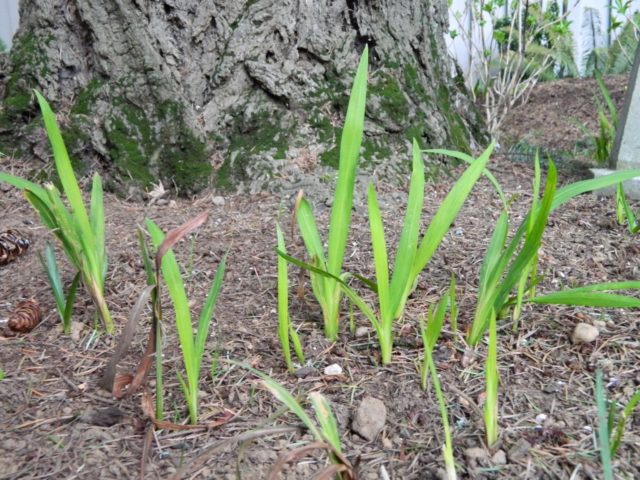
It is not necessary to loosen the mulched soil
Preparing for winter
Montbrecia is afraid of frost, so you should take care of its wintering. Closer to mid-October, the ground part of the plant is cut off, and the rhizome is dug up.
The bulbs removed from the ground should be stored in a cool dry (approximately + 10 ° C) room.
In areas with non-severe winters, crocosmia is allowed not to be dug out, but covered with a layer of mulch or spruce branches.
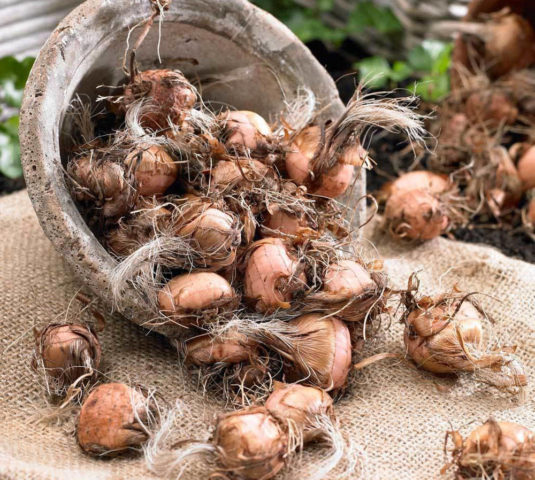
Dry the bulbs before storage.
Diseases and pests
Montbrecia is resistant to many diseases inherent in flower plants. However, sometimes you have to deal with such troubles as:
- Fusarium... This disease is characterized by yellowing and subsequent death of the leaf plates. Flowers also deform and dry out. The disease can be cured only at an early stage of development. For this, the plant is treated with fungicides.
Fusarium can kill a flower
- Gray rot... The disease can be determined by the appearance of a fluffy gray coating on parts of the plant. In the course of treatment, the affected fragments are removed, and healthy ones are treated with a solution of potassium permanganate to prevent the spread of infection.
Gray rot is easier to prevent than cure
The montbrecia has other enemies:
- Medvedka. It is a large insect that feeds on plant roots, in this case crocosmia bulbs. To combat the bear, insecticidal preparations are used. Another option for dealing with a pest is traps. To do this, closer to winter, in the area of the supposed habitat, the bear cubs dig a small hole and fill it with manure. After a while, the trap is dug up. It remains only to destroy the pests that have settled there.
Destroying the root system, the bear destroys the flower
- Thrips... These are small insects that feed on montbrecia sap. The result of their activity is discolored spots and stripes on the vegetative parts of crocosmia. After a while, the leaves fall off, the stems are deformed, the montbrecia loses its decorative effect. It is possible to rid the plant of pests with the help of insecticides - Confidor, Actellik, etc.
Light stripes indicate the presence of thrips.
Conclusion
Planting and caring for montbrecia in the open field is not particularly difficult. An unpretentious and beautiful crocosmia can become a decoration of a personal plot.
